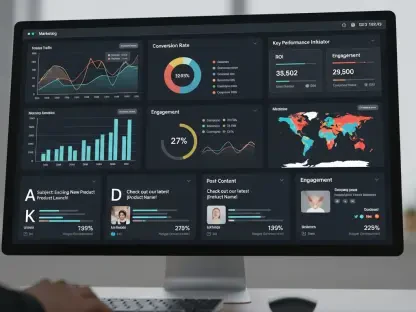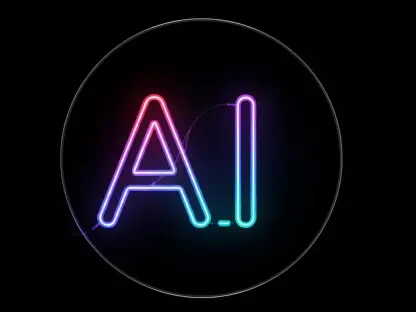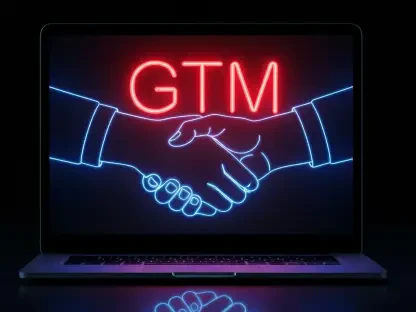Imagine a digital landscape where more than half of all searches end without a single click, as users find instant answers through AI-generated summaries or conversational tools. This is the reality of online search today, where traditional methods of driving website traffic are being challenged by rapidly evolving technologies. The rise of AI-driven search tools has shifted the focus from merely ranking on search engine results pages to being cited as a trusted source in automated responses. This comparison delves into two pivotal strategies—Traditional SEO (Search Engine Optimization) and LLM Optimization (Large Language Model Optimization)—to uncover how they differ, where they overlap, and what they mean for businesses navigating this transformative era of digital visibility.
Understanding the Foundations: Traditional SEO and LLM Optimization
Traditional SEO has long been the backbone of online visibility, focusing on enhancing a website’s position on search engine results pages (SERPs). This approach relies heavily on tactics like keyword research, building authoritative backlinks, and optimizing technical elements such as site speed and mobile-friendliness. The primary aim is to attract clicks and drive organic traffic by aligning content with search engine algorithms, ensuring that users find relevant information through platforms like Google.
In contrast, LLM Optimization emerges as a response to the growing influence of AI-driven tools, such as ChatGPT or Google’s AI summaries. This strategy prioritizes creating content that AI systems recognize as credible and authoritative, often resulting in direct citations within generated answers. Unlike SEO’s focus on rankings, LLM Optimization seeks to position content as a go-to resource for AI responses, catering to users who increasingly rely on quick, conversational outputs rather than visiting individual websites.
The relevance of both approaches cannot be overstated in today’s digital ecosystem. While Traditional SEO remains a foundational practice for maintaining visibility amidst fierce competition, LLM Optimization addresses the shift toward zero-click searches and generative AI reliance. As user behavior evolves—with projections indicating a significant rise in AI tool usage for search by 2027—these strategies must be understood in tandem to adapt to a landscape where clicks are no longer the sole measure of success.
Key Differences Between Traditional SEO and LLM Optimization
Primary Objectives and Focus Areas
At its core, Traditional SEO is designed to secure higher rankings on SERPs, aiming to capture user attention through visibility and clicks. The emphasis lies in driving traffic to a website by optimizing for specific keywords and ensuring content aligns with search engine criteria. Success in this realm often translates to increased page views and engagement metrics that reflect user interaction.
LLM Optimization, however, shifts the goalpost toward becoming a trusted reference for AI-generated responses. Instead of prioritizing clicks, this strategy focuses on content credibility, aiming to be directly quoted or summarized by AI tools in answers to user queries. For instance, while SEO might target ranking first for a term like “best running shoes,” LLM Optimization seeks to have a brand’s detailed guide cited in a ChatGPT response to a related question.
This fundamental divergence highlights a broader shift in digital priorities. Traditional SEO caters to a model where users actively seek websites, whereas LLM Optimization anticipates a future where information is delivered instantly through AI intermediaries. Businesses must recognize these distinct objectives to tailor their efforts effectively across both domains.
Content Strategy and Structure
When it comes to crafting content, Traditional SEO leans on keyword-driven material that is often structured for quick readability. Content is built around exact-match keywords and high-volume search terms, with formats like lists and short paragraphs designed to match user search patterns. The goal is to provide scannable information that aligns with what search engines reward in rankings.
LLM Optimization, on the other hand, emphasizes a conversational tone and comprehensive depth in content. This approach prioritizes topic clusters over isolated keywords, addressing user intent through detailed, context-rich narratives that AI can parse effectively. For example, integrating structured formats like FAQ schemas becomes crucial, as they enhance AI readability and ensure key points are easily extracted for automated summaries.
The contrast in content design reflects differing audience interactions. While SEO content is crafted for users skimming SERPs, LLM-focused material caters to AI systems that value holistic topic coverage and natural language. Adapting to these nuances requires a strategic balance, ensuring content serves both human readers and machine interpreters without sacrificing quality or relevance.
Metrics of Success and Measurement Tools
Measuring the impact of Traditional SEO involves well-established analytics such as bounce rate, time spent on page, and rank tracking tools. These metrics provide insights into user behavior and site performance, with authority signals like backlinks and adherence to E-E-A-T principles (Experience, Expertise, Authoritativeness, Trustworthiness) playing a significant role. Success is often quantified by tangible growth in organic traffic and SERP positions.
For LLM Optimization, success metrics are less conventional, focusing on visibility within AI responses and frequency of brand mentions in generated content. Trust signals, such as brand recognition and exhaustive topic coverage, take precedence over traditional link-building. Tools for tracking LLM performance are often AI-driven themselves, analyzing how often content is cited or referenced in automated outputs, a stark departure from SEO’s manual tracking processes.
This discrepancy in evaluation methods underscores a broader evolution in digital measurement. While SEO relies on direct user interaction data, LLM Optimization navigates a more abstract landscape of AI trust and citation. Businesses must adapt to these varied benchmarks, integrating both traditional analytics and emerging AI-focused tools to capture a complete picture of their online presence.
Challenges and Limitations in Implementation
Implementing Traditional SEO comes with well-documented hurdles, including the need to stay abreast of frequent algorithm updates from search engines. Intense competition for top rankings often demands significant resources, while the rise of zero-click searches continues to erode organic traffic potential. These factors create an environment where even optimized websites struggle to maintain consistent visibility.
LLM Optimization presents its own set of challenges, notably the absence of standardized guidelines for earning AI citations. Monitoring how a brand is represented in AI-generated content proves difficult, as does the constant need to refresh material to sustain trust with evolving algorithms. Without clear metrics or feedback loops, businesses often find themselves guessing at what drives AI recognition.
Both strategies share common obstacles, such as the demand for technical expertise and substantial investment in content creation. Rapid shifts in search behavior further complicate efforts, requiring agility and foresight to remain relevant. Ethical concerns also loom large, particularly the risk of misinformation in AI responses, which necessitates rigorous accuracy in content to prevent reputational damage or user distrust.
Conclusion: Choosing the Right Strategy for Your Goals
Reflecting on the distinctions between Traditional SEO and LLM Optimization, it becomes clear that their goals, content approaches, and success metrics carve unique paths in the digital realm. SEO stands as a pillar for driving traffic through SERP dominance, while LLM Optimization emerges as a forward-thinking method to secure trust in AI-driven answers. Both, however, prove complementary, with a hybrid approach often delivering the most robust outcomes for visibility and engagement.
Looking ahead, businesses are encouraged to assess their immediate needs against long-term trends when allocating resources. For those focused on established traffic goals, prioritizing Traditional SEO offers a proven route to clicks and user interaction. Conversely, investing in LLM Optimization provides a safeguard against the growing tide of AI search reliance, capturing audiences primed for high conversion through direct answers.
The actionable step forward is to integrate both strategies into a cohesive digital plan, balancing keyword optimization with conversational depth and structured data. By auditing current content for AI readability and reinforcing brand authority through consistent updates, companies position themselves to thrive amidst change. This dual focus ensures adaptability, equipping brands to lead in a landscape where search continues to redefine itself.









